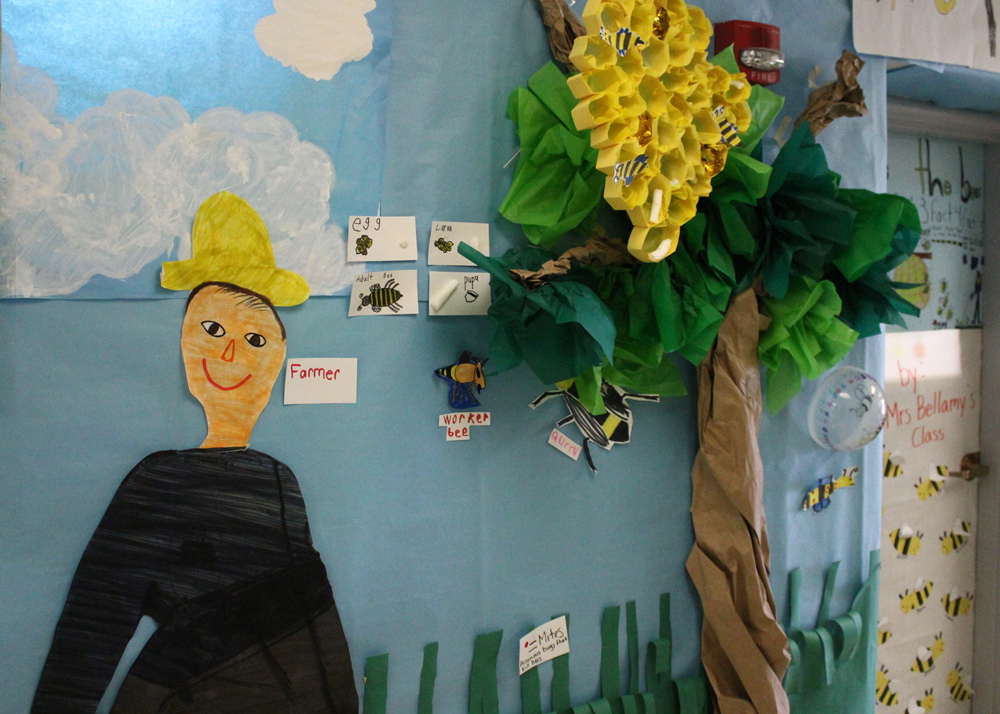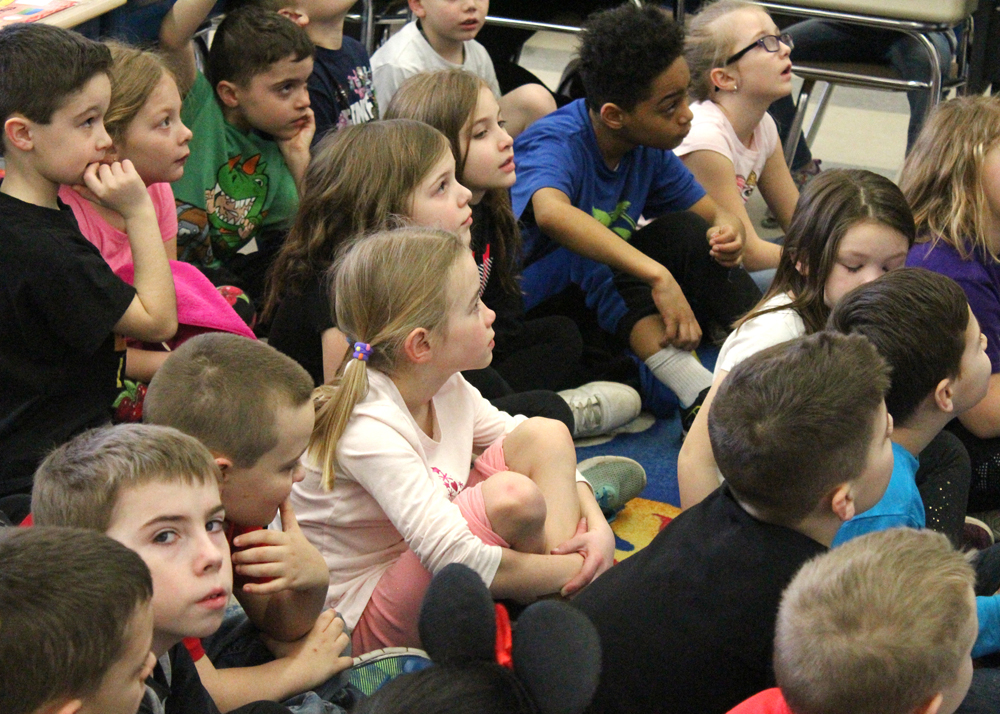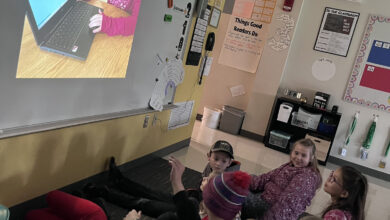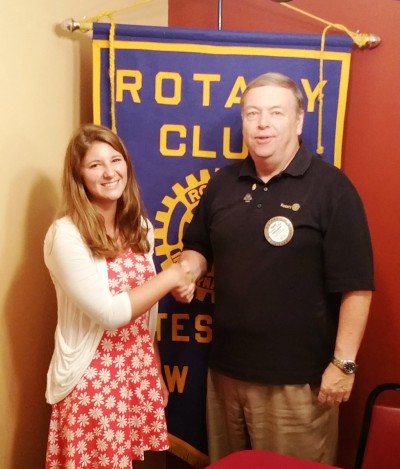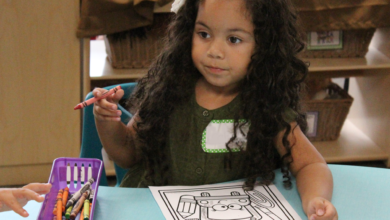Endangered pollinators find new friends at Fairbanks Road School
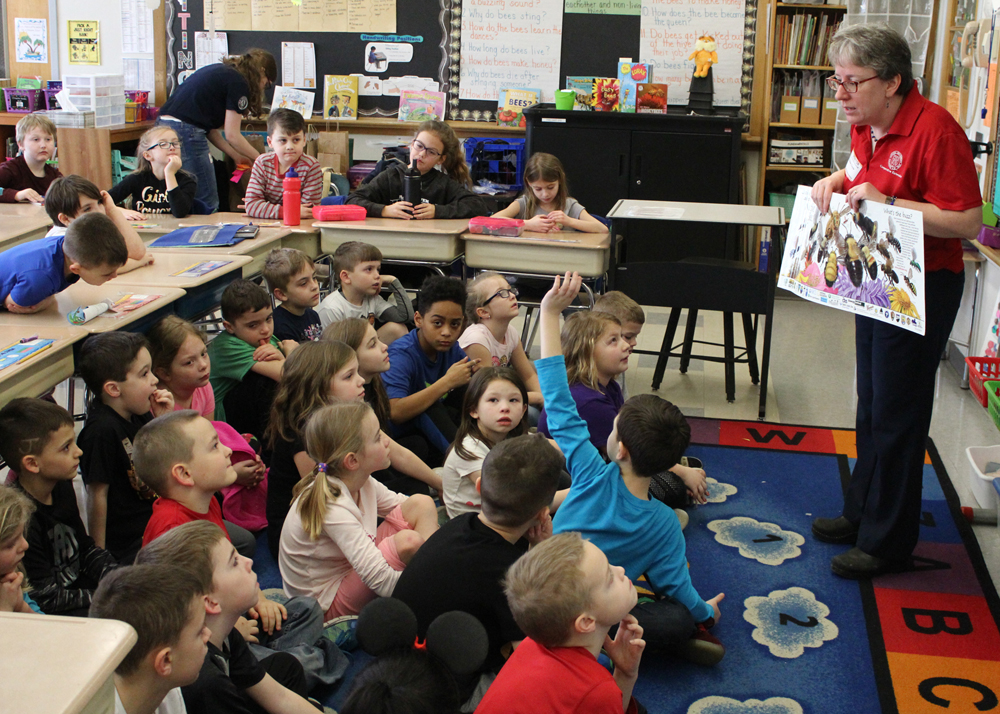
When visiting speaker Susan Coyle, the 4-H Program leader from Cornell Cooperative Extension, arrived at Fairbanks Road Elementary School, she was greeted with a hallway decorated top to bottom with artwork of bees and bee facts. Coyle was there to advocate for honeybees, native bees and other valuable pollinators. She had no trouble convincing the school’s second-graders of the insects’ importance.
Coyle spoke about the wide variety of bees and their value in food production. She quizzed students on their knowledge of bees and on the reasons for the declining bee population. They were quick with potential answers: pesticides, mites, monocultures, climate change, shrinking habitat. They were also very aware that other pollinators are experiencing similar declines. Coyle assured them that scientists and farmers are working hard to find solutions. She then broke the students up into groups of surrogate almond trees, bees and farmers to demonstrate pollination and how all partners work together.
“Our second-grade classes have been studying plant reproduction, pollination and bees,” said teacher Rose Heppner. “Our teachers each have individual approaches to the subjects, but by collaborating, our lessons all become richer. Together, we are able to create an immersive learning environment where all of our students share knowledge across classrooms and subject disciplines. They can exercise ELA, math and art skills, in addition to science and researching.”
The Fairbanks Road School second-grade teaching team includes Rose Heppner, Bethany Alesio, Kelly Bellamy, Katie Krahmer and Jamie Snook.
Provided information and photos
